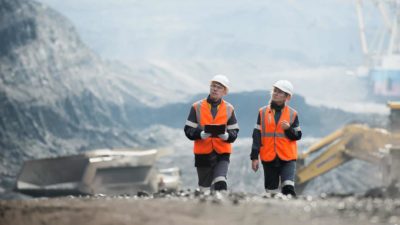The BHP Group Ltd (ASX: BHP) share price is seeing significant volatility at the moment. But are things going to get better for the ASX mining share?
Since 26 August, BHP shares have dropped by more than 10%. However, a large part of the decline might be due to the share going ex-dividend. This means that new investors who bought shares on or after the ex-dividend date are no longer entitled to the final FY22 dividend.
But with the dividend allocation date out of the way, and with the BHP share price down, is it worth thinking about the mining giant?
Can the good times continue?
BHP had a very strong 2022 financial year. It generated US$21.3 billion of continuing operations underlying attributable profit (up 26%), reduced its net debt by 92% to US$333 million, and increased its ordinary dividend by 8% to US$3.25 per share.
Not only is BHP making a lot of money for shareholders but it's also paying a lot of money to governments. Its 2022 economic contribution report showed that A$18.5 billion has been allocated to Australian governments in taxes, royalty-related income taxes, royalties, and other payments.
In fact, the company is one of the largest taxpayers in Australia. It expects to fund approximately 10% of total Australian company tax, compared to the budgeted cash receipts by the federal budget.
Can BHP keep making big profits? Let's look at what the company said in its annual report about the outlook for some commodities, given it's the resources themselves that can have a key impact on earnings and the BHP share price.
Copper
BHP noted that the copper price has fallen due to two reasons in two stages:
The first decline was due to the demand impact of China's COVID-19 lockdowns. The second was due to recession speculation in advanced economies. We believe mine supply and scrap collection will grow in the coming few years, covering near-term demand growth.
In the longer term, BHP thinks that traditional end-use demand is expected to be "solid", while broad exposure to the electrification megatrend offers "attractive upside".
In FY23, the copper production is expected to be between 1,635kt to 1,825kt. However, the company warned that Escondida unit costs are expected to be between US$1.25 to US$1.45 per pound, largely reflecting "inflationary pressures".
Iron ore
BHP's biggest profit generator is usually iron ore. That means the outlook for iron could have the biggest influence on the BHP share price.
But, near the end of FY22, weakening sentiment within the steel value chain fed back into lower prices for iron ore. The mining giant said:
Looking ahead, the key near-term uncertainties are the pace of steel end-use sector recovery in China, how the Chinese authorities administer steel production costs in the remainder of the 2022 calendar year, and the performance of seaborne supply.
In the medium-term, China's demand for iron ore is expected to be lower than it is today as crude steel production plateaus, and the scrap-to-steel ratio rises.
In the long-term, prices are expected to be determined by high-cost production, on a value-in-use adjusted basis, from Australia or Brazil. It is imperative that we continue to compete on both quality and operational effectiveness.
Western Australian iron ore production for FY23 is expected to increase to between 246mt to 256mt, reflecting the tie-in of the port debottlenecking project and the continued ramp-up of South Flank.
FY23 unit costs are expected to be between US$18 to US$19 per tonne.
Other commodities
With metallurgical coal, the price has descended from extreme highs. BHP said the industry faces a "difficult and uncertain" period ahead. There is uncertainty about China's import policy and Russian coal supply. But, it believes that a wholesale shift away from blast furnace steelmaking is still "decades in the future".
Nickel prices also saw a spike but have since fallen back to pre-Ukraine invasion prices due to "recession fears". In the longer term, BHP believes that nickel will be a "core beneficiary of the electrification megatrend and that nickel sulphides will be particularly attractive".
My view on the BHP share price
It's certainly possible that the iron ore price and BHP share price could go lower. But an end to Chinese COVID lockdowns could be a positive development.
With the BHP share price down 28% since April, I think it's in the buy zone for the long term. I like its focus on decarbonisation resources like copper, nickel, and potash.






